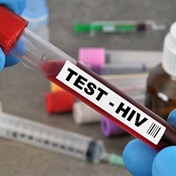However, an increase in tuberculosis (TB) among these patients may be cause for concern, the study said.
HAART, which uses a combination of several antiretroviral drugs, is designed to slow or prevent HIV infection from progressing to Aids.
British researchers analysed data from more than 22 000 HIV-positive patients in Europe and North America who started HAART for the first time between 1995 and 2003. While patients' control of HIV improved during those years, their risk of death in the first year after starting HAART remained about the same.
Increased risk found
The study found evidence that the risk of Aids in patients starting the therapy has increased since 1998. This may be largely attributable to an increase in TB, the researchers said.
"The discrepancy between the clear improvement we recorded for the action of the drugs in keeping the HIV virus in check and the apparently worsening rates of clinical progression might be related to the change in demographic characteristics of the study participants, with an increasing number of patients from areas with a high incidence of tuberculosis," the study authors said in a prepared statement.
The study also found that many patients started HAART at a more advanced stage of HIV disease than is recommended by treatment guidelines.
"Early diagnosis and treatment of those with HIV-infection is needed to prevent progression to Aids. An expansion of voluntary and cost-effective screening in health-care settings is likely to result in improved patient care and prognosis," the authors noted.
Taking breaks may cut side effects
Another study in the same issue of The Lancet concluded that halting HAART in HIV-positive patients from time to time could reduce treatment side effects and save money.
HAART is expensive and can cause serious side effects, such as liver damage. But stopping the treatment may increase the risk of disease progression and may also allow the virus to become resistant to HAART, according to background information in the article.
The 22-month study included 430 HIV patients who were divided into two groups. One group had their treatment temporarily halted at different times, while the other group received continuous HAART. Levels of resistance and control of the HIV virus remained similar between the two groups.
Certain side effects, such as nausea and diarrhoea, were less frequent among patients whose HAART was interrupted, but they experienced more minor HIV-related issues, such as oral thrush, the study said. – (HealthDayNews)
Read more:HIV/Aids Centre
August 2006




 Publications
Publications
 Partners
Partners










